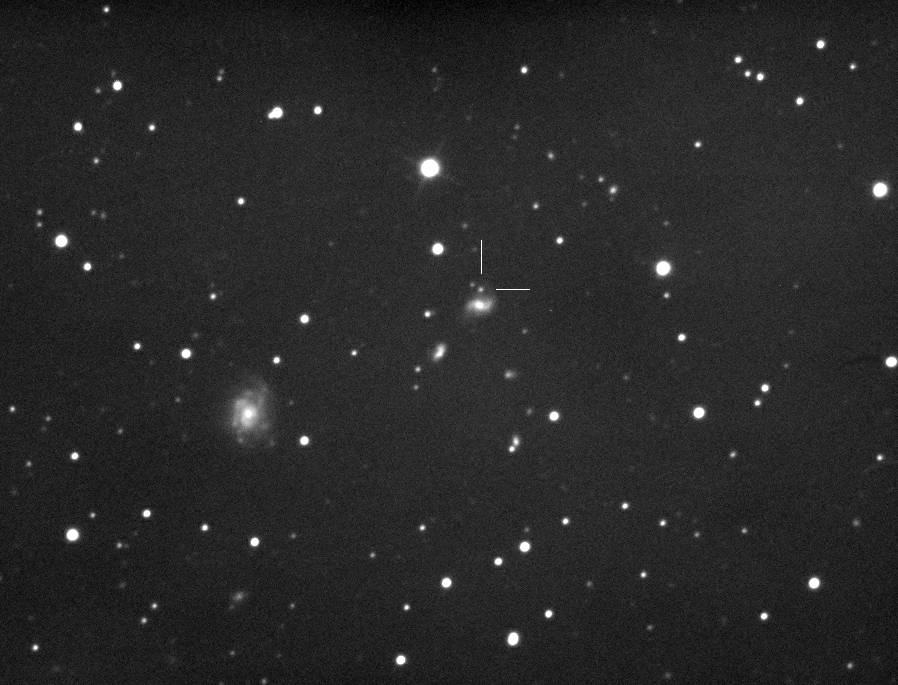SN 2016aa in PGC 22658 (at R.A. = 08h04m16s.02, Decl. = +61°33'42".7), discovered by F. Ciabattari, E. Mazzoni and S. Donati on behalf of Italian Supernovae Search Project (ISSP), Located 0".0 east and 0".0 north of the center of PGC 22658 - Mag 18.7, Type II (z=0.03) (offset 13.6) (References: ATEL 8641)
See discovery image and classification ATEL.

Asiago spectroscopic classification of SN2016aa in PGC 22658
ATel #8641;
Questo indirizzo e-mail è protetto dallo spam bot. Abilita Javascript per vederlo.
on 5 Feb 2016; 16:32 UT
Distributed as an Instant Email Notice Supernovae
Credential Certification: Enrico Cappellaro (
Questo indirizzo e-mail è protetto dallo spam bot. Abilita Javascript per vederlo.
)
Subjects: Optical, Supernovae
We report the spectroscopic classification of SN2016aa in PGC 22658 through observations obtained with the 1.82-m Copernico Telescope in Asiago (+ AFOSC; range 340-820 nm, resolution 1.3 nm).
A low signal-to-noise spectrogram obtained on Jan 04.97 UT indicates that SN2016aa is a Type II SNe, a few weeks after the explosion. The redshift, as inferred from the narrow emission lines of the host galaxy, is z = 0.03.
Photometry was obtained with AFOSC on Jan. 04.98 UT, providing the following magnitudes (sloan, ABmag): g = 18.67+-0.05, 18.36 +- 0.05 18.28+-0.06. Addditional unfiltered photometry was obtained by amateur astronomers. This has been calibrated with USNO reference stars (V band), and the following magnitudes have been obtained: Jan 17.88 UT, 18.5 (0.5); Jan 19.96 UT, 18.5 (0.5); Jan 22.01 UT, 18.2 (0.2); Feb 4.10, 18.3 (0.2); Feb 4.95, 18.3 (0.2).
As the supernova magnitudes remained almost constant (within the error bars) over 18 days, we suggest that AT2016aa can be more precisely classified as a Type II-P SN.
The Asiago classification spectra are posted at this website: URL http://sngroup.oapd.inaf.it ; classification(s) was(were) made via GELATO (Harutyunyan et al. 2008, A.Ap. 488, 383) and SNID (Blondin and Tonry 2007, Ap.J. 666, 1024).




